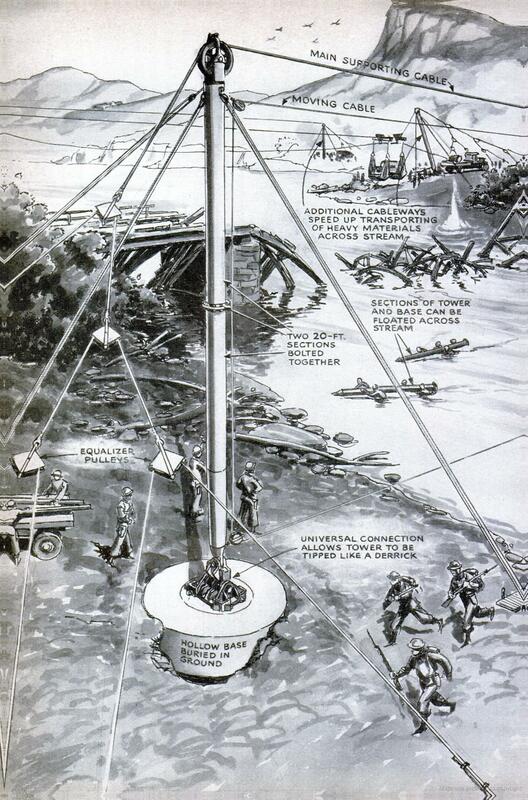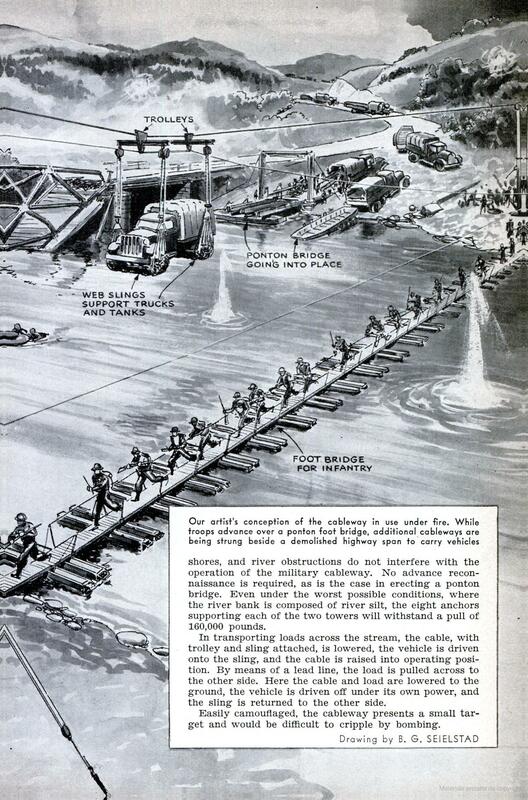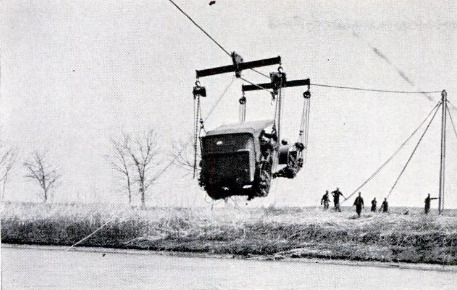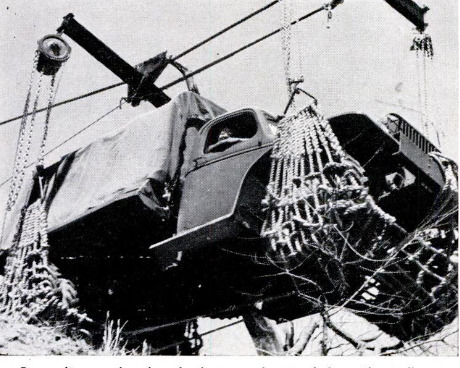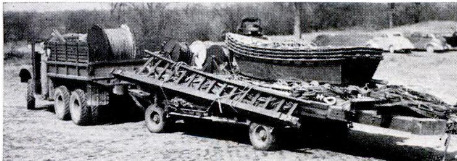Portable cableway bridges streams to carry army tanks and trucks
Item
-
Title (Dublin Core)
-
Portable cableway bridges streams to carry army tanks and trucks
-
Article Title and/or Image Caption (Dublin Core)
-
Title: Portable cableway bridges streams to carry army tanks and trucks
-
extracted text (Extract Text)
-
SWIFTER transportation of
U.S. Army trucks and
tanks across rivers and ra-
vines is made possible by a
compact portable military
cableway invented by Lt. Col.
R. B. Lord. In three hours, 13
skilled men, with the help of
40 unskilled ones, can erect
the 14-ton cableway and have
loads up to 13 tons riding
across its 1%-inch steel cable
at the rate of one every four
‘minutes.
The breaking strength of
this 750-foot. cable is 240,000
pounds. The trucks, supported
by it, cross the stream or
gorge at a speed of 15 miles
an hour. By throwing a
series of such cableways
across a river at intervals, a
tremendous amount of mate-
rial can be transported across
without causing the bottle-
necks created by ponton
bridges, in which piled-up
troops and material offer a
tempting target to enemy ar-
tillery and bombing planes.
A truck and trailer are all
that is required to transport
the complete cableway along
roads to the scene of opera-
tions. The 40-foot steel tow-
ers are constructed in 20-foot
sections to facilitate trans-
portation. Internal air com-
partments in these towers,
and in the bases on which
they rest, permit them to be
floated across streams for
erection on the opposite banks.
By placing two cableways to-
gether and using them as a
unit, loads up to 27 tons can
be carried. The cost of a
complete cableway is only
about $4,000.
Flood conditions, shallow
shores, and river obstructions do not interfere with the
operation of the military cableway. No advance recon-
naissance is required, as is the case in erecting a ponton
bridge. Even under the worst possible conditions, where
the river bank is composed of river silt, the eight anchors
supporting each of the two towers will withstand a pull of
160,000 pounds.
In transporting loads across the stream, the cable, with
trolley and sling attached, is lowered, the vehicle is driven
onto the sling, and the cable is raised into operating posi-
tion. By means of a lead line, the load is pulled across to
the other side. Here the cable and load are lowered to the
ground, the vehicle is driven off under its own power, and
the sling is returned to the other side.
Easily camouflaged, the cableway presents a small tar-
get and would be difficult to cripple by bombing.
-
Language (Dublin Core)
-
Eng
-
Date Issued (Dublin Core)
-
1941-12
-
pages (Bibliographic Ontology)
-
125-127
-
Rights (Dublin Core)
-
Public domain
-
Archived by (Dublin Core)
-
Sami Akbiyik
 Popular Science Monthly, v. 139, n. 6, 1941
Popular Science Monthly, v. 139, n. 6, 1941

